GT Series Cup has announced a new Hypercar class for its championship, which until now featured GT3 and GT4 classes in a sprint format of competition. However, differently from WEC’s Hypercar that features mainly prototype like cars, with the exception of the Glickenhaus SCG 007 and Aston Martin Valkyrie, that in some way have a road legal counterpart, GT Series Cup will feature track only versions of road going hypercars. The first car to announced is the Pagani Huayra R chassis #12 of 30, which landed in Brazil on January 27 and has just completed its shakedown in Interlagos. The organization expects at least two more cars to join the class during the year, another Pagani and a Bugatti (do I get Bolide vibes?).
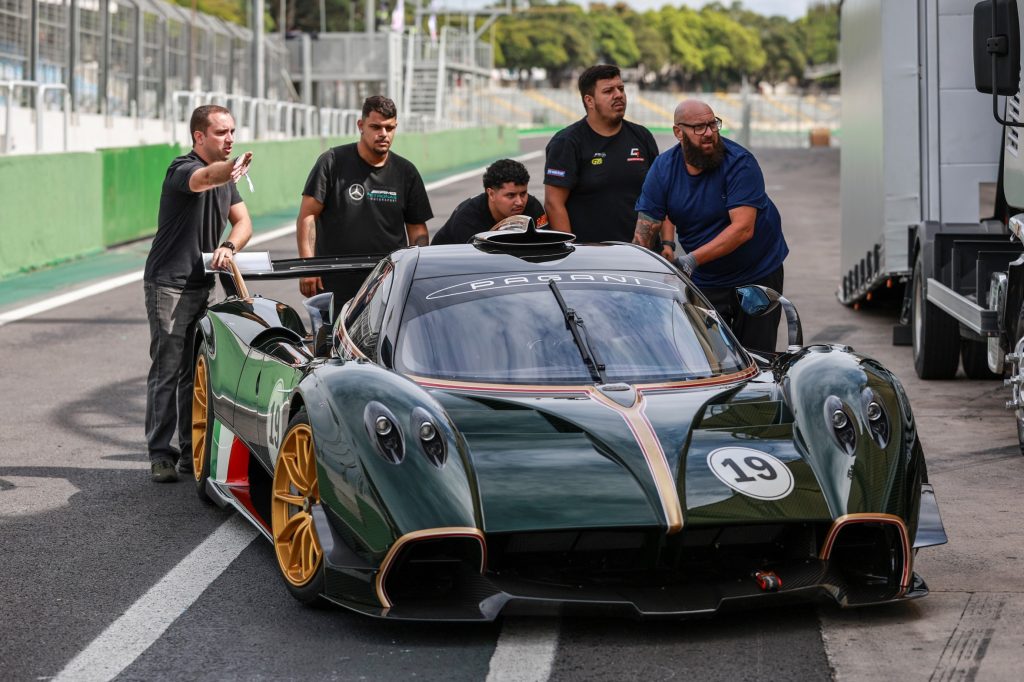
The noise and presence of the Huayra R in Brazil brings some nostalgia to older race fans, who will remember another exclusive race car that raced locally, the Mercedes CLK-GTR from the late Alcides Diniz, which was also a track only car equipped with a naturally aspirated V12. Although the Pagani has been imported with a track only permit, which will see it only being used on tracks, it will have a very different life compared to the CLK-GTR. While the Mercedes only saw action in closed events at the Capuava race track, far from the public eyes, Brazilians will have the unique opportunity worldwide to see a Huayra R in competitive racing. The car’s debut is forecast to be at the championship first round, on March 8-9.
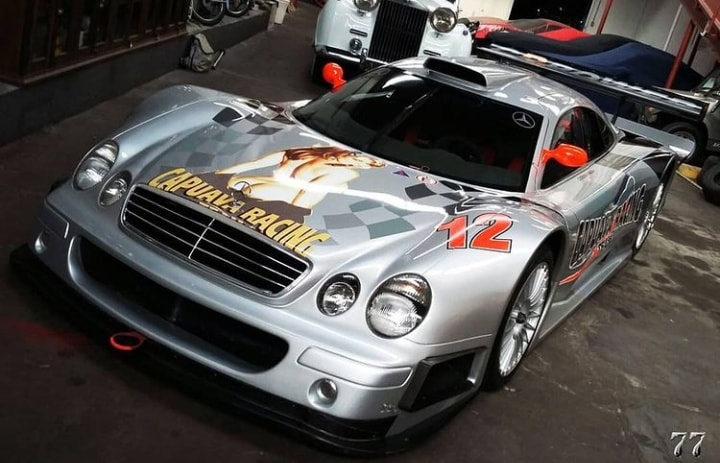
About the Huayra R
The Pagani Huayra has been presented in 2011 as the successor of the Zonda, The name is a reference to Wayra Tata, the Quechua wind god, with a production run limited to 100 units, which had been sold out by 2015. The Huayra R was introduced in 2021 as a successor to the Zonda R, with the production limited to only 30 cars, and a price tag of 2.6 Million Euro.
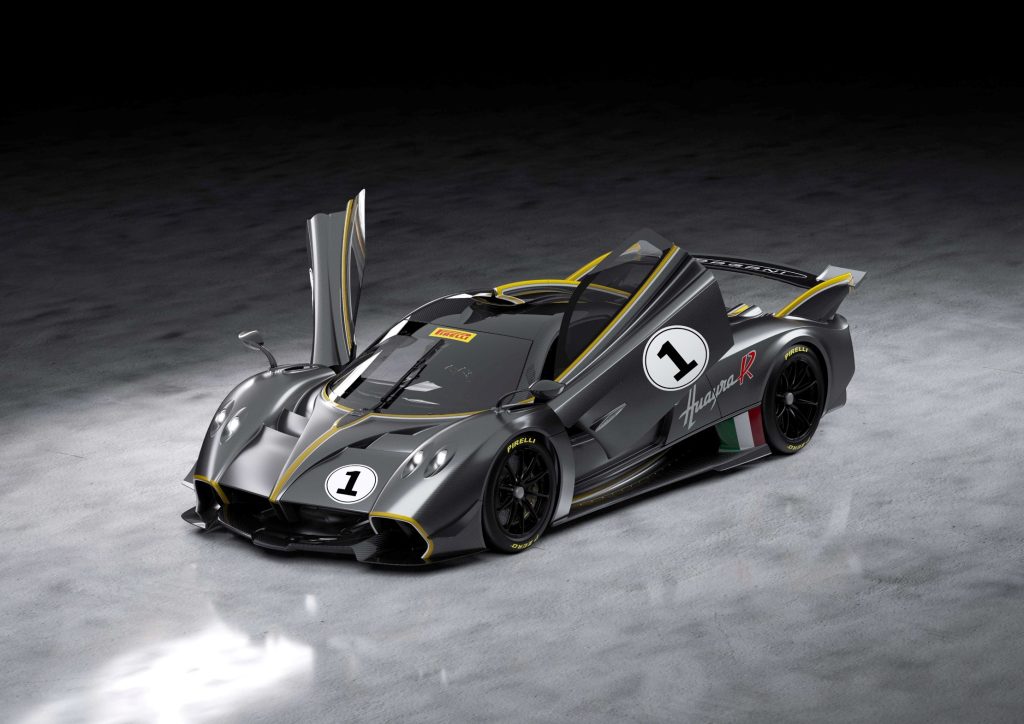
Technical Overview
Chassis
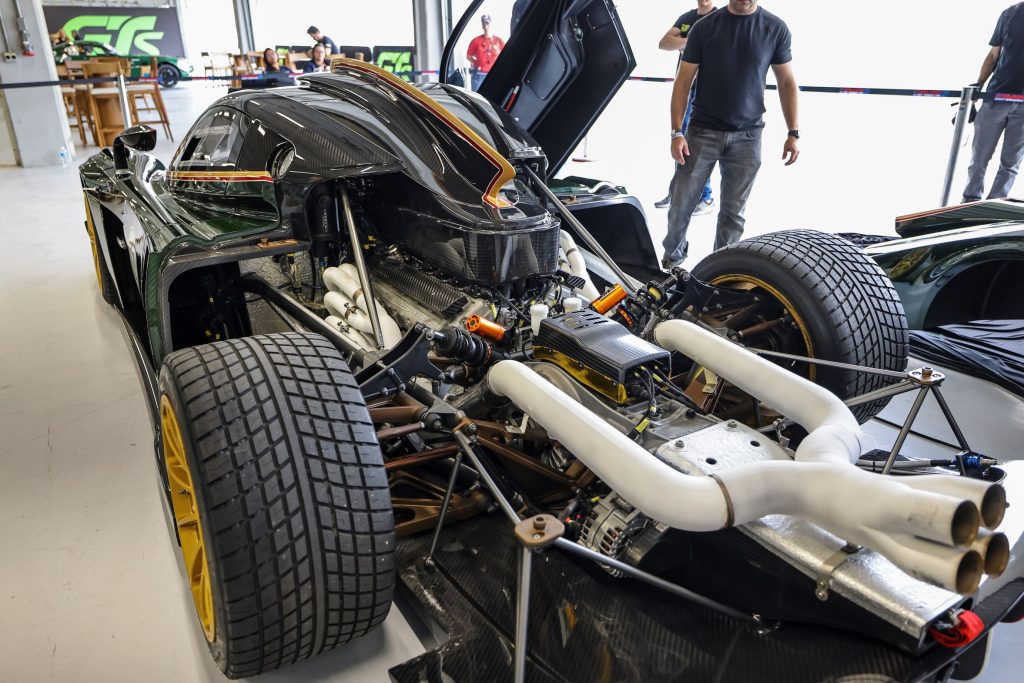
While initially planned to be based on the Huayra’s carbon-titanium tub, the Huayra R’s chassis ended up becoming a FIA compliant three-part monocoque with higher sides and a reinforced safety cage with energy-absorbing composite structures is integrated into the monocoque to withstand impacts and rollovers, resulting in a 16% increase in torsional stiffness and 51% increase in flexural rigidity, while keeping the weight at only 1.050 kg. The center section remains built in Pagani’s proprietary Carbo-Titanium HP62 G2 and Carbo-Triax HP62, with front and rear tubular subframes in Chromoly steel.
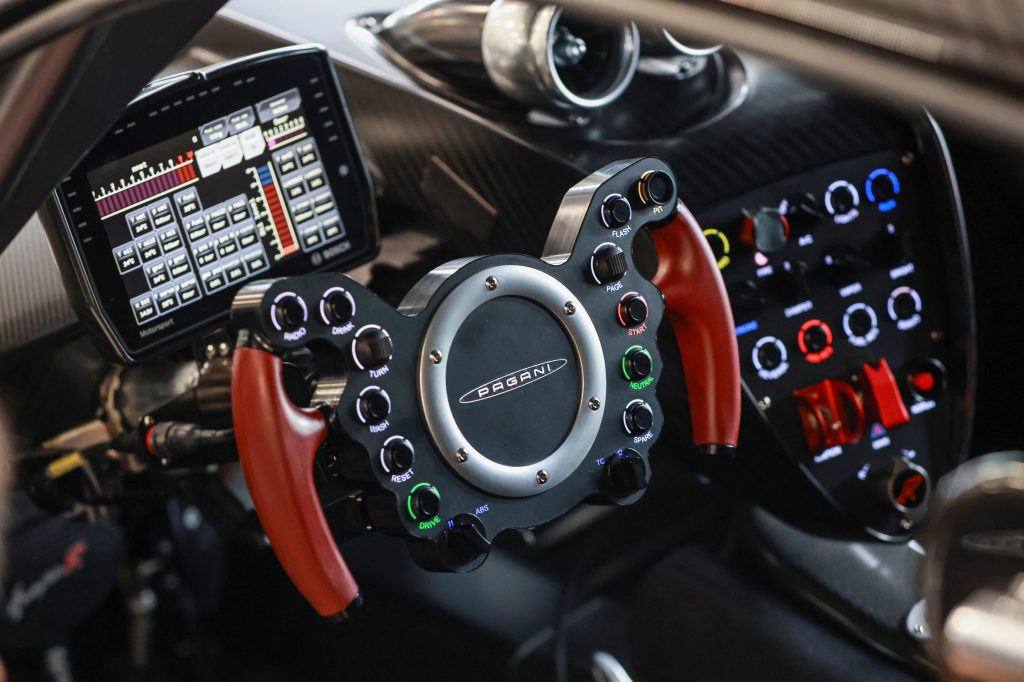
Inside, fire safety is managed by an automatic extinguishing system, while fixed carbon monocoque seats feature six-point harnesses and flame-resistant Nomex covers. Additionally, FIA-approved Ener-Core EC 50 foam padding enhances comfort and protection, with carbon fiber headrests offering lateral support. At the end, only the mirrors are a carry-over from the road going Huayra, making it a modern day GT1.
The Huayra R’s suspension, braking, and tire systems showcase Pagani’s cutting-edge engineering. Its suspension features new kinematics and geometry withforged aluminum alloy components, independent double wishbones, and electronically controlled active shock absorbers. This setup ensures maximum power transfer, precise handling, and optimal grip on slick tires, seamlessly integrating with the car’s active aerodynamics for superior cornering and braking stability.
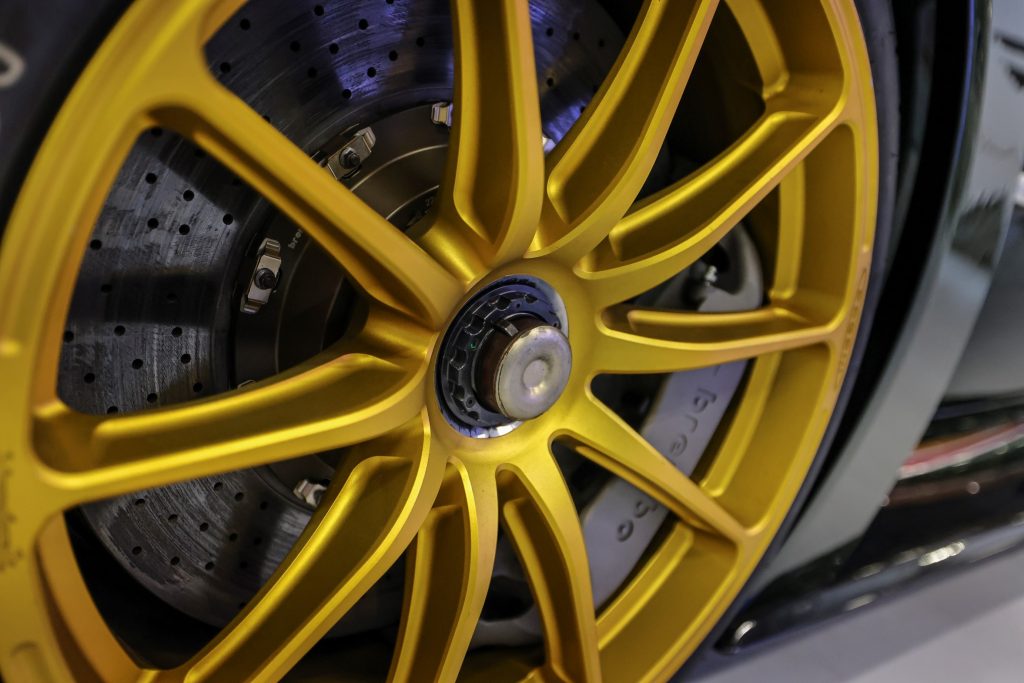
Braking is powered by advanced CCM-R self-ventilated carbon-ceramic discs from Brembo, designed for exceptional thermal conductivity, rigidity, and durability under extreme track conditions. For tires, Pagani collaborated with Pirelli to develop a slick version of the P Zero, offering top-tier control, traction, and braking performance. These racing-standard tires, available in Dry and Wet versions, ensure maximum grip. Lightweight, 19-inch aluminum alloy rims, developed with APP Tech, further enhance performance and efficiency.
Powertrain
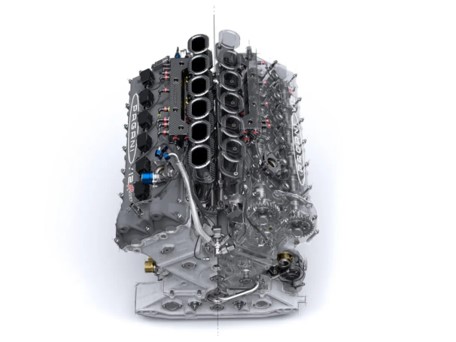
The Huayra R is a cutting-edge, track-focused hypercar developed with 100% bespoke engineering, free from production model constraints. A key highlight is its Pagani V12-R engine, a naturally aspirated 6.0L V12 delivering 850 hp at 8250 rpm and 750 Nm of torque, while weighing just 198 kg. To match that power, the car features a newly developed six-speed sequential gearbox, engineered with HWA AG for maximum shift precision, 95% friction efficiency, and a lightweight 80 kg build. Integrated directly with the monocoque and suspension, it enhances structural rigidity and overall performance.
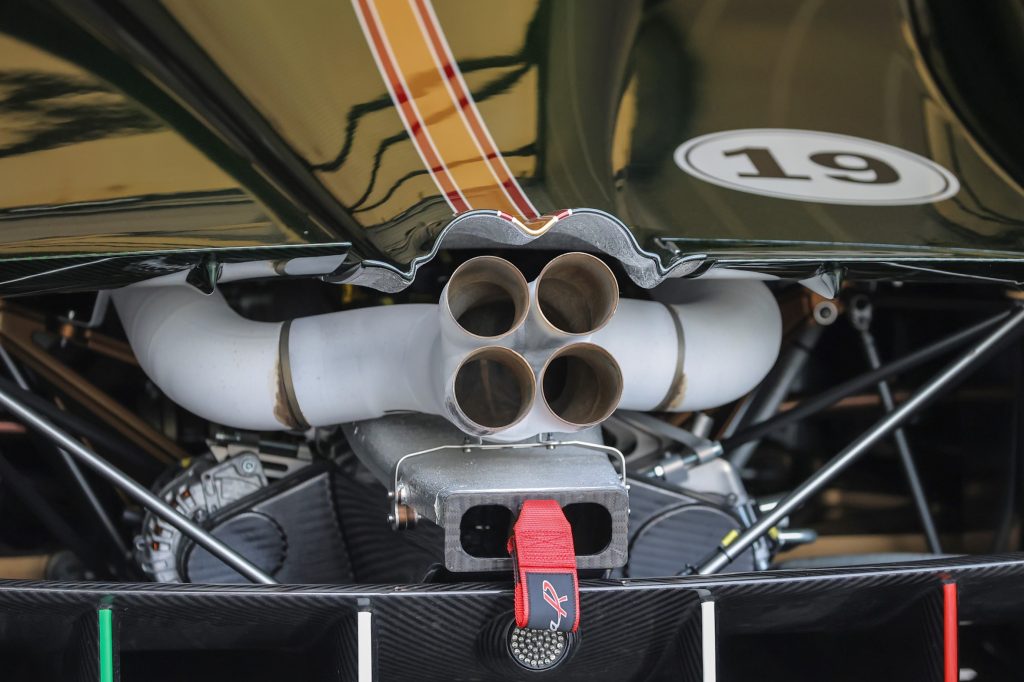
Designed with HWA AG, it features an exhaust system crafted from lightweight Inconel alloy and coated in ceramic, ensuring optimal heat dissipation and minimal back pressure. Designed for both performance and acoustics, it delivers an F1-style roar reaching up to 140 db, while optional mufflers keep noise emissions within FIA’s 110 db limit.
Aerodynamics
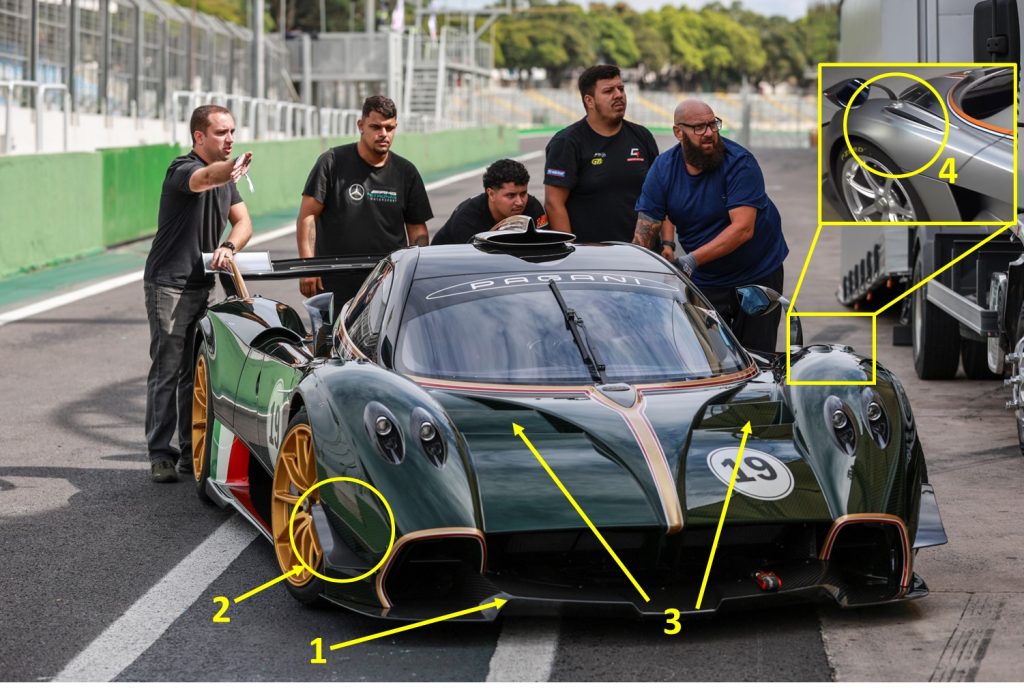
The aerodynamic package of the Huayra R was developed with a target goal of achieving 1.000 kgf of downforce at 320 kph. This was done through the implementation of a new splitter design at the front (1), with canards (2) and two new side air intakes to improve front braking cooling and channel the outgoing flow to the sides to improve aero efficiency.The active flaps from the road going version are gone and the bonnet has received new vent openings to improve cooling efficiency (3). Air vents have been added to the wheel arches (4) to improve front downforce,
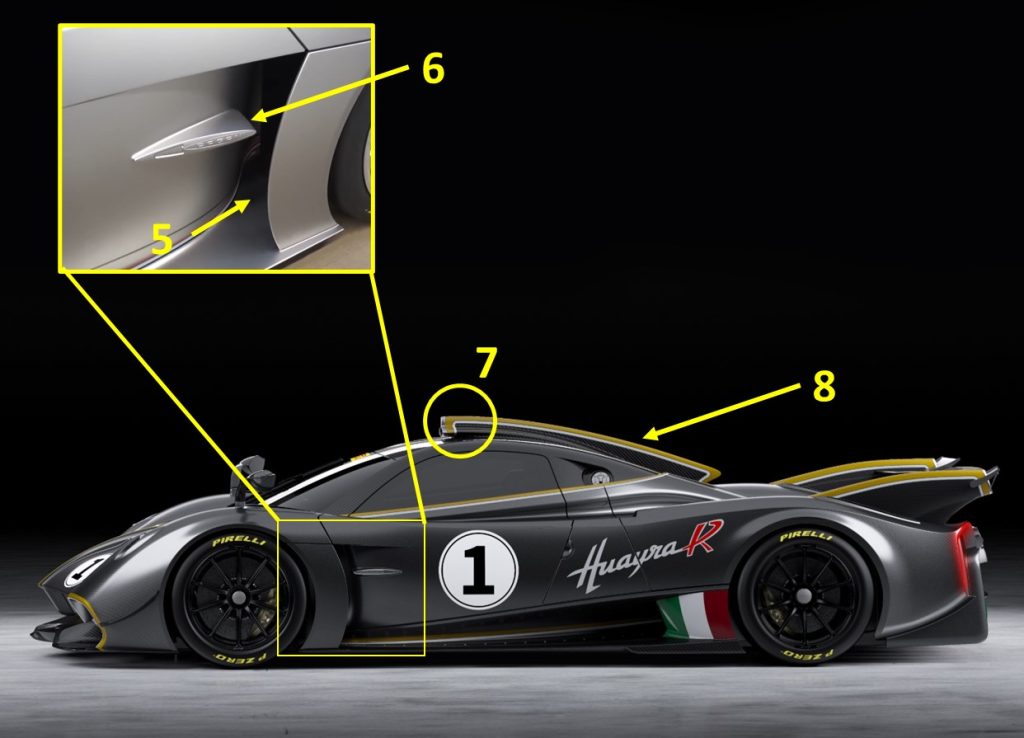
Moving to the side, an opening was introduced right after the front wheel arch to improve flow for the rear section (5), with a winglet (6) placed on the discharge side. A roof scoop (7) has been added to improve the engine breathing, and a vertical fin (8) was added to improve stability.
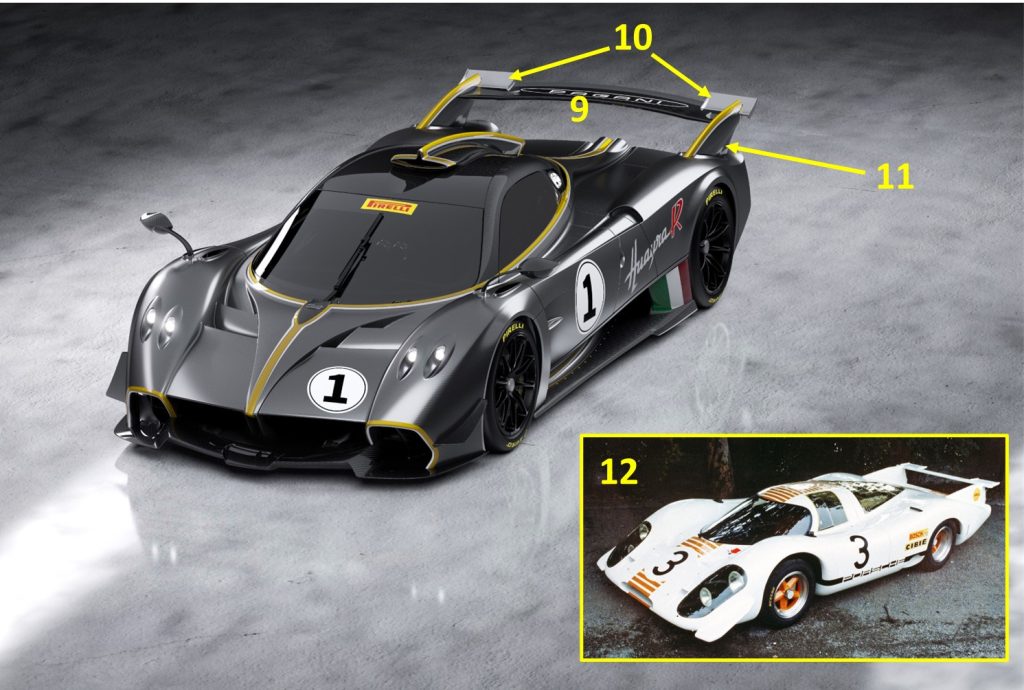
The rear wing (9) has a single element, with two winglets on the corners (10) and a side support (11) with clear inspiration from the Porsche 917 Langheck 1969 (12).
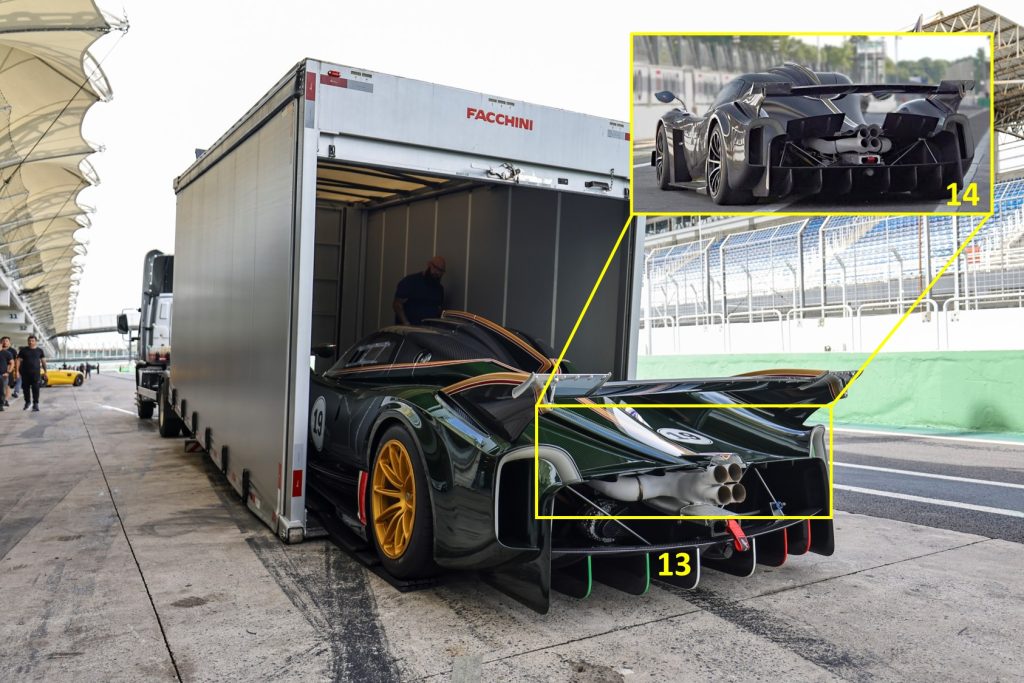
These wings works in conjunction with the flat floor and the rear diffuser (13), keeping as well the active flaps at the rear (14) to complete the aerodynamic package
Expected performance
It is quite difficult to project the track performance of the Huayra R as it is mainly a Track Day car, and data for lap times is not readily available as mostly it is run in private sessions. However, based on some of the data available our estimated lap time in Interlagos, in qualifying mode, is around 1m29s2, with a time in the zone of 1m28s being achievable with a professional driver and the right conditions.



